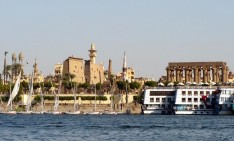Of all ancient civilizations, Egypt seems to hold a special magnetism for the modern world. Ruined monuments etched with a fascinating script, colossal pyramids, imposing temples, spectacular landscapes, and incredible archaeological discoveries all add to the mystique surrounding. Like a steady staccato, it reverberates far and wide, beckoning everyone to come and experience its age-old tale of wonder.
Because of Egypt’s unique geographical positioning, lying at the corner of three continents (Africa, Asia, and Europe), it soon became the centre of attention for its strategic importance. The land has attracted many outsiders, often as invaders. Hyksos, Greeks, Romans, Arabs, Mamluks, Ottomans, French, and British have ruled over the country, introducing their languages, populations, and ways of life.
You cannot experience the whole of Egypt in one trip – and we do not recommend you try either. However, we suggest places you should explore according to your interests first. We are sure you will find more interesting things to do and see during your first trip compelling you to visit again.
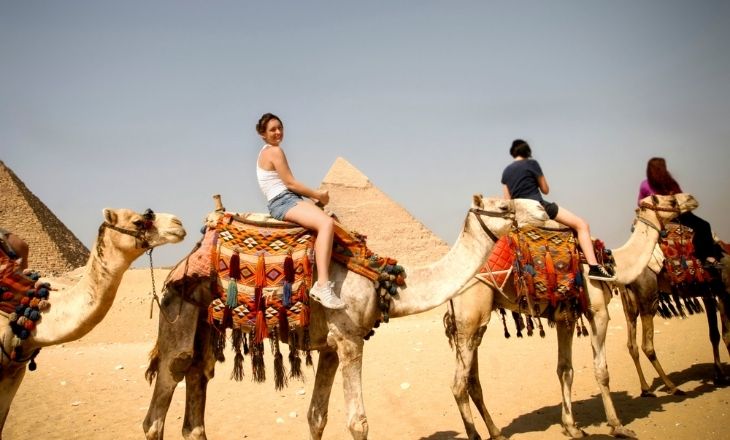
1. To walk back in time |
Museums …
Egypt boasts of several world-class museums that make experiencing the history and seeing the artefacts of the country a pleasure. You may have seen some of the Egyptian glimpses if you have visited your country’s museum. Almost every one of them has a dedicated area to display Egyptian artefacts. The Hermitage, The Louvre, The Metropolitan Museum of Art, the British Museum are among the biggest repositories of these antiquities.
Yet these astonishing collections are overshadowed by the objects on display at the
Egyptian Museum, located right off the main Tahir square in the centre of Cairo. It has on display some 120,000 items, with another 150,000 stored in the basement.
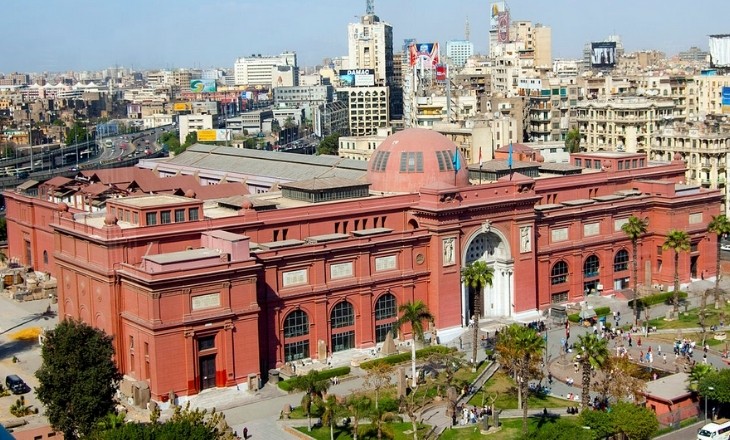
If you are interested in early Christian history in Egypt, then visit the Coptic Museum. It is a splendid mansion built in 1908 and newly refurbished, located in Old Cairo in a residential area where many Copts live. You will be amazed at the beautiful woodwork throughout the museum that illustrates the sect's typical architecture. It has a stunning collection of medieval or early Christian art, probably the best in the world, as well as fine examples of textiles for which Coptic weavers were renowned.
The magnificent Gayer-Anderson Museum is the representation of the domestic lifestyle of the affluent in the 17th century. This house turned museum was the residence of Major R.G. Gayer-Anderson, who was an avid collector of artefacts. You will find oriental to the western style of décor and objects, making it an eclectic ensemble. It is adjacent to the Ahmad ibn Tulun mosque, one of Cairo’s most magnificent.
There are impressive museums outside Cairo. Alexandria has the Graeco-Roman Museum, opened in 1892, holds a remarkable collection dating back to the Greco-Roman (Ptolemaic) era, offering an important glimpse into the Greco-Roman civilization. Currently, this museum is under renovation but is expected to start by the end of 2020.
Another interesting museum that opened in 1997, relatively small but spacious, is the Nubian Museum at Aswan and displays many Nubia objects. It is closer to Aswan Old Cataract Sofitel Hotel. It was a superhuman international effort supported by UNESCO to Save the Monuments of Nubia that would otherwise have been submerged by Lake Nasser behind the high dam of Aswan. The Egyptian architect Mahmud al-Hakim's skills are clearly evident in its architecture, the gardens surrounding the structure. The museum is also a testimony of the men and women's love and devotion who combed the region to assemble the pieces on display there.
The biggest Museum is opening in Egypt by 2021. Grand Egyptian Museum (GEM), situated less than two miles from the Giza Plateau, will house about 100,000 artefacts spanning 7000 years of Egyptian history. It will also feature the latest technology, such as virtual reality exhibits. Visiting the Grand Egyptian Museum will definitely be a highlight to any Egyptian adventure in the coming times.
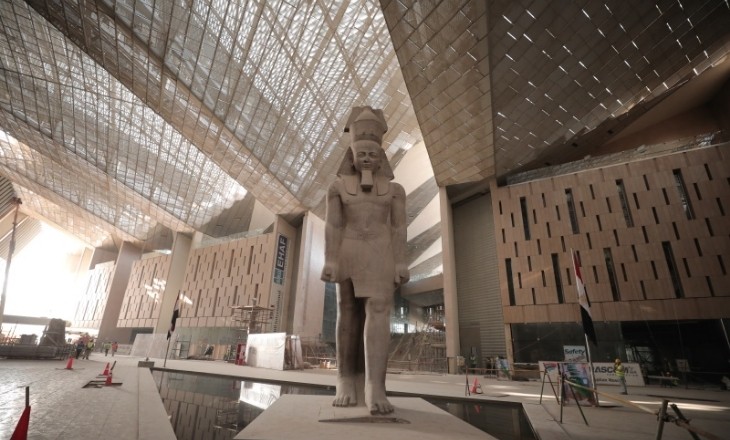
2. Best of the Old and the New |
Leave your systematic sensibilities back home and simply jump into the city's maddening vibe, and that is the best way you will enjoy Cairo. At your first sight as a western traveller, you will be overwhelmed, but do not let that deter you from exploring. In that chaos also the city has its own order by which it operates, and the people are hospitable to the fault since it is embedded in their culture, so relax.
Cairo is a desert city, densely populated and expanding at an alarming rate consuming natural landscapes. It is also a contradictory city in some areas as the arid land lays on one side and the other is lush vegetation along the banks of the Nile. After Egypt’s independence from colonial rule in 1952, Cairo was seen as the greatest city for education, culture, art, music and media within the Arab world.
.jpg)
The city caters for all tastes - western Cairo is modern and spacious, whereas Cairo's eastern side is historic and packed with many attractions. It is also grown haphazardly over the centuries, with more people inhabiting a small area; small lanes, crowded apartments, and Islamic architecture make the eastern part interesting to explore but laborious to navigate.
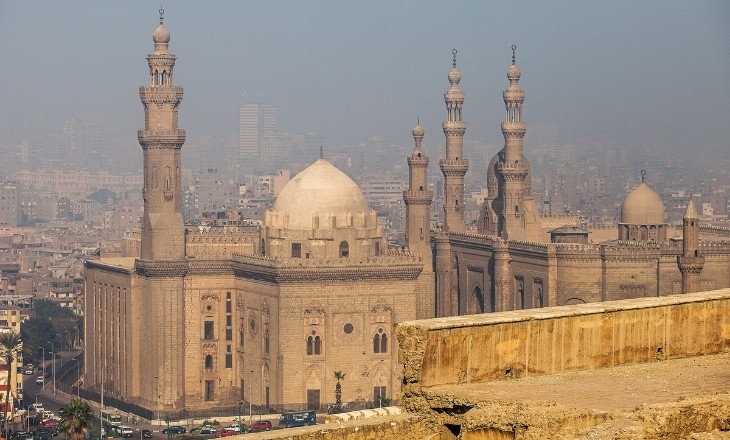
South is Coptic Cairo, an old fortified town that flourished with Romans using it as a strategic location on the Nile between Memphis and Heliopolis on the northeast. The port was known as Babylon locally and became the Christian community region in Cairo.
Central Cairo is the heart of the modern city and centred around Tahrir Square that boasts some fine 19th-century architecture. Islamic Cairo, however, is the centre of attraction; its minarets and domes, bazaars and typical of 1001 Nights stories.
Alexandria was the beacon for seafarers for a very long time, and therefore Alexander the Great made it his empire capital. Not much of the old glory is evident around the city today. A lot has disintegrated, and most of it has been submerged in the sea, including Cleopatra’s Palace and the city’s ancient lighthouse. You will be able to see Alexandria’s submerged archaeological treasures right where they lay only when the proposed cutting-edge underwater museum is built nearby in the bay. Hopefully, the excavations will reveal the tombs of Cleopatra and Mark Antony.
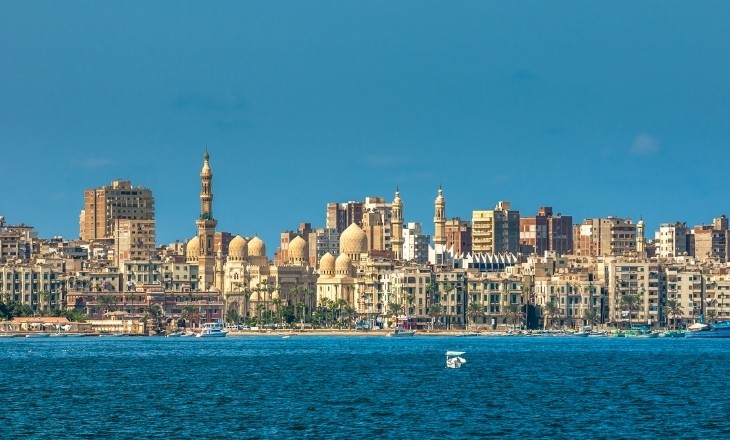
Alexandria had seen its share of European decadence in the 19th century when Pasha Mohammed Ali revived Alexandria’s importance as a trade port by linking it to the Nile. This era ended in the 1950s as the foreigners escaped Nasser’s revolution of Nationalism.
Alexandria’s cosmopolitan culture has distinct Mediterranean influences found in the European quarter and its typically Egyptian areas. Being a seaside town means fabulous seafood to binge on, and Alexandria capitalizes on it with its delicious dishes and vintage coffee houses. Add to this the dazzling new library, and you will have a plethora of attractions to discover in this Mediterranean port city.
Visit the spooky Catacombs of Kom es-Shoqafa beneath the Karmous quarter of Alexandria to see a fusion of pharaonic, Roman and Greek funerary themes reflecting the city’s diversity.
3. Explore Pyramids |
Giza, the legacy of ancient Egypt in the southwest, is where the famed ancient man-made mountains of limestone are. These iconic structures were filled with riches and served primarily as royal burial places for the deceased pharaoh, who was thought to be divine, a god-man, the offspring of a human mother and a deity. It was believed that he would ascend into the gods' eternal world after his death and live there forever. The royal burial was to guarantee a successful afterlife.
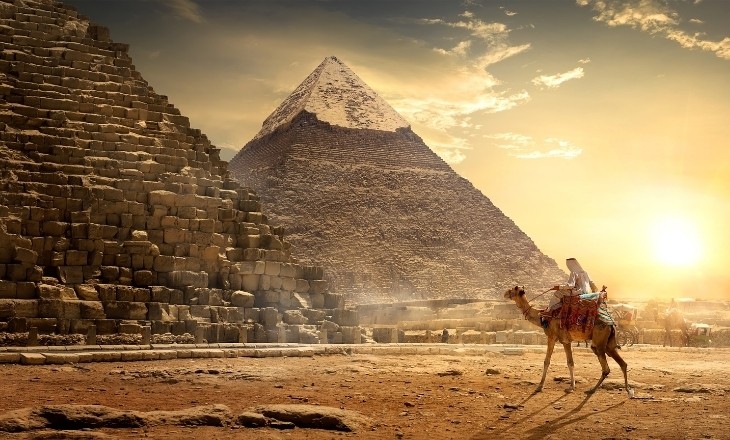
The Sphinx, a mythical creature with the body of a lion and the head of a human dated around 2500 BC, stands guard over the Pyramids at Giza and their associated queens’ pyramids, temples and tombs. These complexes consisted of the pyramid, pyramid temple, a long causeway to a valley temple, and smaller satellite and/or queens’ pyramids. They were both cosmic staircases to the heavens and mansions of eternity.
The famous pyramids at Giza are the products of years of experimentation. The earliest pyramids were step pyramids - Mud-brick tumuli and rectangular mastaba tombs were expanded to step (architectural structures that used flat platforms or steps), which receded from the ground up. The 3rd Dynasty architect Imhotep designed the first, largest, and most famous step pyramid at Saqqara as a tomb for the pharaoh Djoser.
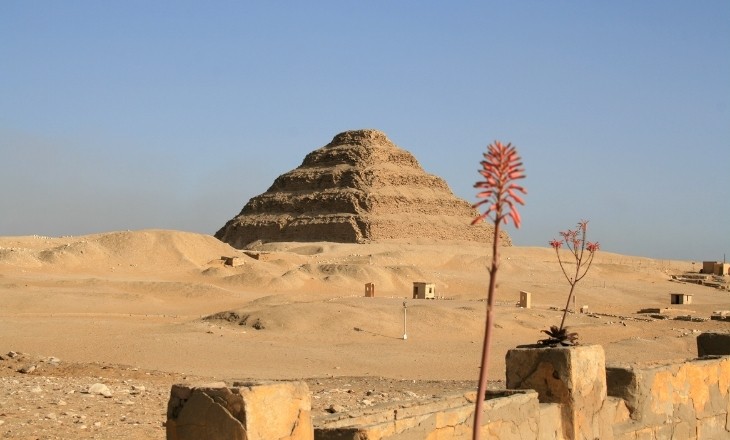
In the Fourth Dynasty, Egyptians began to build true pyramids that have smooth sides. The first attempts occurred at Meidum and Dahshur under King Snefru and eventually reaching a pinnacle at Giza under Kings Khufu, Khafre, and Menkaure.
Khufu’s Great Pyramid originally stood 481 ft. high. No royal pyramids are found after the 17th Dynasty, but small pyramids adorned elite tombs at Thebes in the New Kingdom. Nubian royalty, however, made use of this form extensively; in fact, there are more pyramids in Nubia - about 255 than in Egypt - about 118.
The Pyramids are the only one of the Seven Wonders of the Ancient World to survive. The absolute vision and workmanship of people 4,500 years ago, creating structures that would be the world’s tallest until the 14th century, is pretty unbelievable. Today, even the accompanying spectacle of camel and horse rides, souvenir and soft drinks vendors, persistent beggars and the nightly Sound and Light Show does not diminish their splendour.
4. To Sail on the Nile |
Docile and serene, or foaming and formidable, the Nile was really the centre of Egypt’s existence for everything: food, irrigation, communication, transportation and governance. Every year, the Nile's flood deposited rich, fertile silt that nourished the farmers’ productive fields. Its water formed a highway north and south, provided ample fish to eat, essential minerals laden water for irrigation and plenty of mud to make bricks. Off to the edges was the Red Land, the land of desert and arid mountains – lots of sand and stone, several gold mines and the sporadic oasis.

And because the Nile sustained a great civilization around it, it's easy to understand why so many monuments adorn the Nile banks.
Ancient Egyptian construction created enduring testaments proving what is attainable when people put their minds—and thousands of well-organized arms, legs, and backs—to it.
The best way to experience these heritage sites is cruising on the Nile in complete comfort and luxury. As the full board river cruises make their way from Luxor to Aswan or back, it takes you to all the valley’s ancient monuments that constitute the greatest open-air museum in the world.
These cruises offer 3-4-7-night itineraries are professionally guided (by certified Egyptologists) for daily shore excursions.
Luxor To understand the difference between the Old Kingdom and its successor regimes in the Middle and New Kingdoms, you must visit Egypt’s ancient imperial headquarters at Luxor.
This modern-day city of Luxor in Upper Egypt was built on the ancient site of Thebes. Most visitors arrive by flight, but the overnight train from Cairo is an interesting way to make the four-hundred-mile journey. The deluxe category train leaves the main Cairo station in the evening, and passengers, after taking a tasteful meal in their rooms, retire to beds for the overnight journey, arriving refreshed at the Luxor station early the next morning.
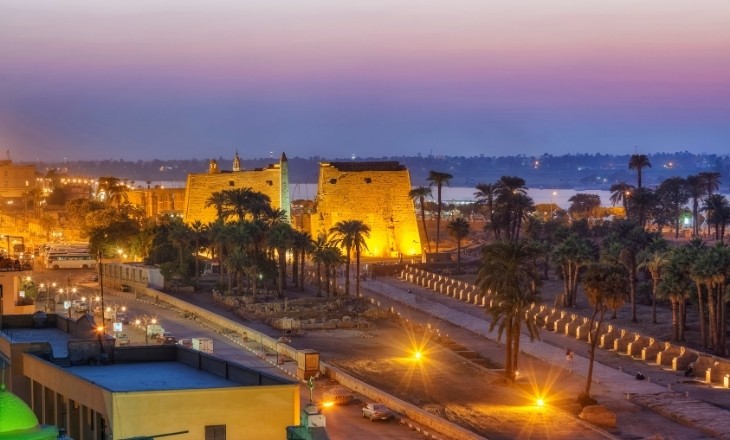
Here, modern Egyptians blend exotic antiquity with modern commercialism. What most people think of as Luxor is actually three distinct areas: Luxor city (including Luxor temple), the village of Karnak, and the necropolis of ancient Thebes. Hordes of foreign visitors crowd the streets, even in the sweltering summer heat.
On the West Bank of the Nile, directly across from Luxor, the famous Valley of the Kings, Valley of the Queens, Temple of Hatshepsut, and many superbly decorated tombs attract enthusiastic tourists to explore the remnants of Egypt’s intricate funerary practices.
Howard Carter’s 1922 unearthing of King Tutankhamun’s tomb full of treasures is still one of the most internationally celebrated sites to visit.
Valley of the Kings located on the West Bank of the Nile, opposite modern Luxor, many tombs were constructed for the pharaohs of the New Kingdom west of a mountain peak with a natural pyramid shape. So far, 63 tombs have been discovered here. Most of them were raided since earlier times, but the greatest collection of paraphernalia was found in the famous tomb of King Tutankhamun.
-1604325280.jpeg)
Valley of the Queens, in antiquity known as Ta-Set-Neferu, meaning "the place of beauty", was the burial site for the wives of pharaohs of the 18th to 20th Dynasties on the West Bank of the Nile at Thebes. Post 20th Dynasty, the tombs very used as multiple burials or Hermit shelters. A lot of tombs are unfinished and without decoration or beautification, looking like caves rather than sacred grave chambers. The most impressive is that of the wife of Ramses II, Queen Nefertari, his favourite.
Karnak Temple - The largest and most enduring is the Temple of Amun at Karnak, begun in the Middle Kingdom and augmented for the next 2,000 years with additional shrines, pylons, and columned halls. Devoted to the ancient Theban gods Amun, Mut and Khonsu, this vast complex reached its pinnacle during the New Kingdom. After the pyramids of Giza, Karnak is Egypt's most significant pharaonic site. Gradual diggings over the years have slowly uncovered the original structure of the temple complex.
Feluccas These traditional lateen-sailing wooden boats can be hired for an afternoon lounging on the Nile or for a 2 or 3 days long journey from Aswan, en-route visiting the temples at Kom Ombo and Edfu. Feluccas have been traversing on the Nile for ages and still serve as conveyance along many stretches. Despite the high-performance motorboats available, these simple boats are favoured by tourists for sunset cruises; they allow you to experience the changing moods of the Nile while slowly sailing in blissful indolence.
Aswan, also once known as Syene, is located on the east side of the Nile about 9.6 km north of the First Cataract, between Aswan and Khartoum has been a favourite winter town since the 19th century. It’s a pleasantly laid back and spacious town, ideal for resting and recovering from the rigours of travelling.
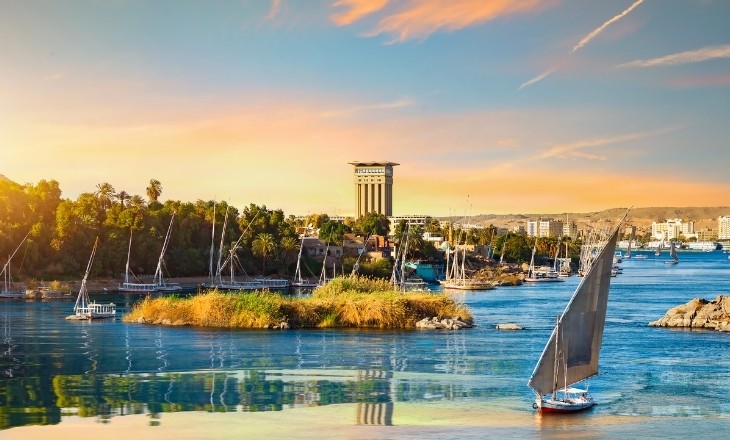
The Nile is wide, languid and stunningly beautiful here, sinuously making its way down from Lake Nasser, around dramatic black-granite boulders and islands scattered with palms. Aswan’s islands, exotic souqs and riverside restaurants can keep you happy in between excursions to sites such as Abu Simbel. From Old Kingdom times, this strategically important stronghold guarded Egypt's southern border and was a base for military invasions into Nubia and Sudan.
Aswan stands on the most captivating part of the Nile, where the desert comes right down to the water’s edge, and the river is dotted with islands. It is home to a large Nubian community, and the town’s laid-back atmosphere makes it one of the more relaxing places in Egypt to visit.
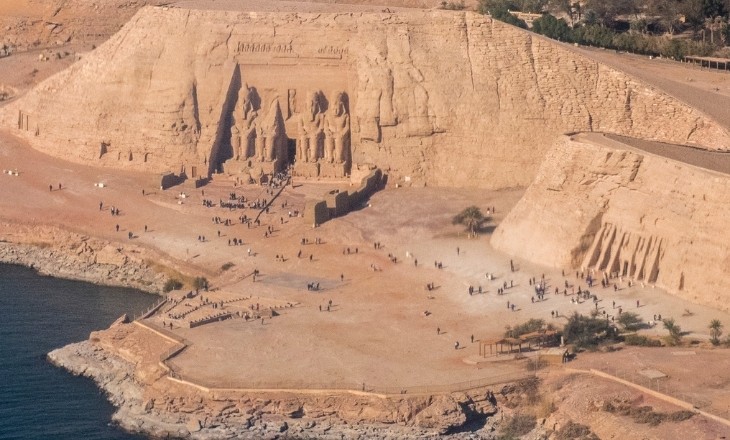
Nubia extends from southern Egypt to northern Sudan. Nubia was ancient Egypt’s backyard and entry point to Africa, south of the Sahara. Ancient Egyptians and Nubians were constantly at odds as Egypt sought to exploit quantities of gold from this region, as well as to import incense, ebony, ivory, exotic animals, and dwarfs through trade. Nubia, however, did turn around the tide by placing one of their own as Egypt’s 25th dynasty; scholars have called its rulers the black pharaohs of Egypt. Although the Nubians were on familiar terms with the ancient Egyptians and imbibed many Egyptian institutions and values, their own traditions did not phase out.
5. Marvel at Oases in the Egyptian Desert |
The Western Desert presents travellers the opportunity to escape Cairo's crowded sites and the Nile Valley and revel in the peace and tranquillity of the empty desert and its green oases. Since time immemorial, oases have been a welcome sight for weary and exhausted travellers; oases contain sufficient water to allow permanent plant growth and human settlement.

The massive depressions beneath Egypt’s Western Desert gave rise to a series of oases west of the Nile, for here, the water table is near the earth’s surface. The deserts shaped civilization as much as the Nile, creating buffer zones between Egypt and its neighbours. Egyptians ventured into the deserts mainly for raw minerals extraction, trade, or military drives.
The Western Desert, though driest and most desolate, is punctuated by the Bahariya, Dakhla, Farafra, Kharga, and Siwa Oases – the five major oases that rise like islands of greenery, where flourishing palm plantations engulf crumbling medieval towns that were once important outposts along ancient caravan routes with permanent water sources large enough to sustain substantial populations. Each oasis has different characteristics due to its diverse landscapes and level of modernization.

In the northwest, the remote Siwa is the perfect place to relax with its lush, green orchards glistening like a mirage in the surrounding barren and inhospitable desert. Over 300 freshwater springs and streams sustain this desert oasis. With its inimitable culture, hilltop citadel, Siwa is regarded by many as the best oasis in Egypt. Yet again, nature will leave you spellbound to see how the freshwater springs feed thousands of date palms and olive trees. If you truly want to see the magic of solitude, make the lonely jeep journey across the great sand sea between Siwa and Bahariyya oases.
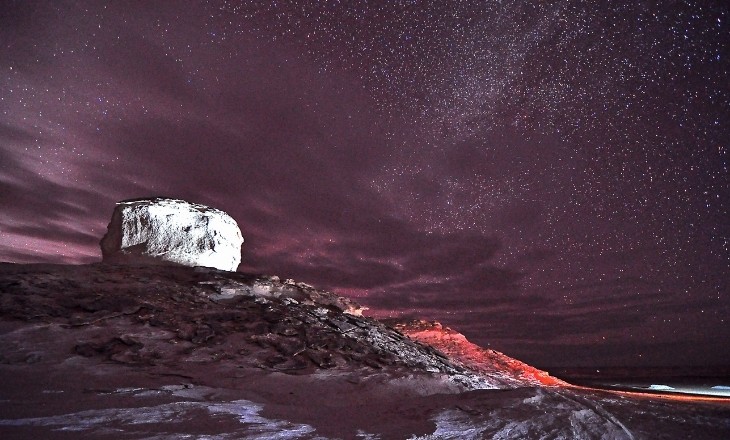
Relax those sore muscles in the hot springs of Bahariyya Oasis before feasting on traditional cuisine. Camp under the stars in the otherworldly White Desert, a surreal landscape of chalk rock-formations in Farafra Oasis, often visited on overnight safaris from the neighbouring oasis of Bahariya. Visiting the Black Desert en route. Enjoy the desert landscape and be astonished as Dakhla Oasis rises from the sands like a mirage.
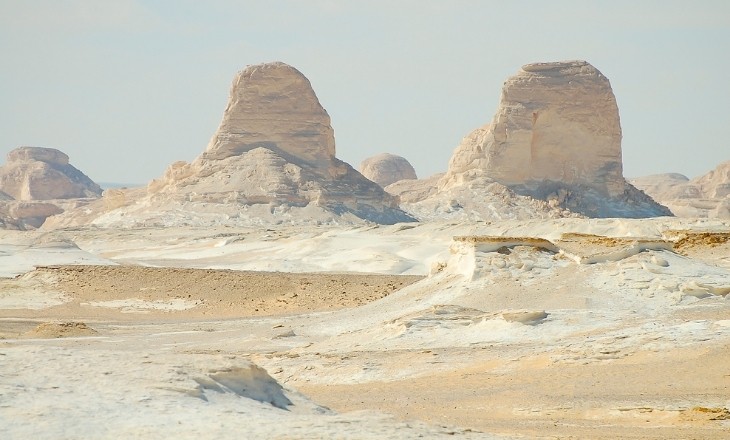
Between Farafra and the beautiful Dakhla oasis, many small fertile areas growing fruit, rice, and peanuts are scattered through the dunes. Dakhla and the more built-up Kharga have the more ancient monuments to offer along with oases experience.
6. Food, Entertainment & Shopping |
Egyptian Food Dining in a restaurant, try mezze, consisting of many delicious, small dishes (particularly good for vegetarians). Street Food Sold from pushcarts or in sit-down diners, Tamiya, Kushari, Fuul and shawarma are tasty, cheap and nourishing.

Shopping There’s an endless choice of pharaonic, classical, Islamic and contemporary designs in the bazaars of Cairo, Luxor and Aswan, and oases such as Siwa. The most sort after is Khan al-Khalili in Cairo. It is Alibaba’s cave of glittering paraphernalia, filled with spices, perfumes, jewellery and souvenirs. This magical bazaar in Cairo has been selling souvenirs to visitors for thousands of years. The original Khan area's lanes are lined with shops selling everything from water pipes and handicrafts to silks and spices.
Even though Egyptians are expert salesmen and haggling is expected, it is generally done with a great deal of charm and hospitality. Even if you do not plan on purchasing anything, they will always invite you to sit down and rest, have a tea or coffee, and a friendly conversation in whatever language you choose. The most distinctive items to buy in Egypt are a papyrus painting or a cartouche.
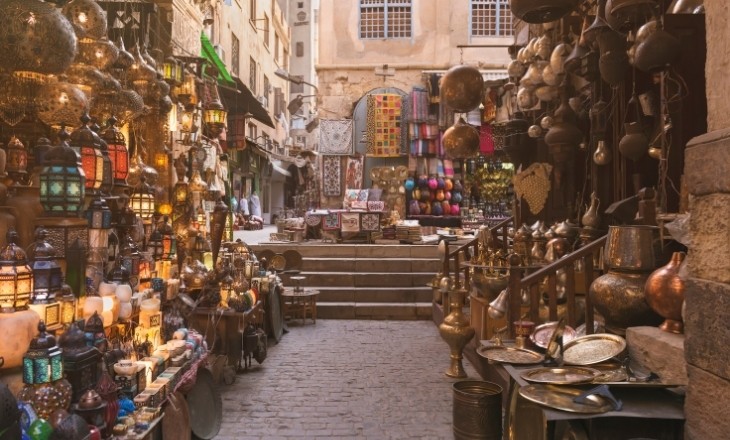
Note - Works of art or antiques over 100 years old are not allowed to be taken out of Egypt.
Bellydancing or Arabic dance is a centuries-old tradition of Raqs Sharqi (eastern dance) is best seen mostly at clubs visited by locals. Public performances are usually part of an evening show at a nightclub along the Pyramids Road, a large hotel or a floating restaurant on the Nile where the dancers and musicians will set your pulse racing.
Whirling Dervishes dancing born of the mystical tradition of Sufi Islam. Sufis claim that through the centuries-old elegant and mysterious twists and turns, the dancers and mystics seek to connect with the divine, with you present, surrounded by the music and the dance. Delightfully intense, colourful shows can be seen at the Wikala al-Ghouri, just south of the Al-Azhar mosque.
7. In Search of Spirituality |
Mount Sinai - Mount Sinai is in the south-central part of the Sinai Peninsula. The mountain also called Jebel Musa (“the mountain of Moses”), is at the height of 7,497 feet above sea level. The mountain is a possible holy site of divine revelation in Jewish history, where God appeared to Moses and gave him the Ten Commandments. The mountain is also revered in both Christian and Islamic traditions and see’s thousands of pilgrims every year.
The triangular-shaped Sinai peninsula is a bridge between Asia and Africa, bounded by the Mediterranean to the north, the Gulf of Aqaba to the east, and the Red Sea to the west.
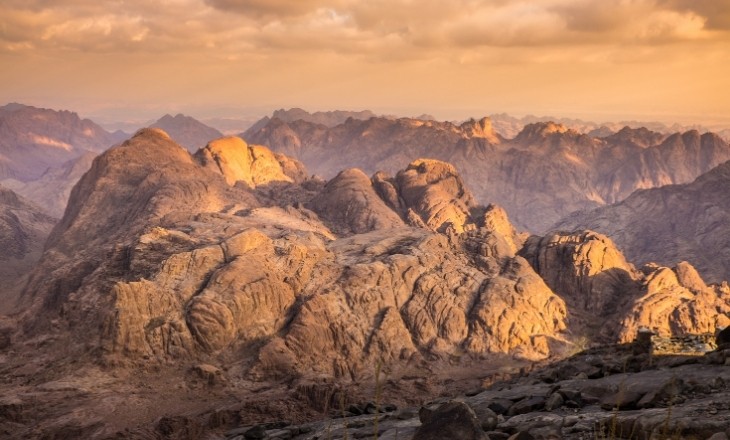
St Catherine’s Monastery – a site sacred to Christianity, Islam, and Judaism.
The monastery was built and fortified in the middle of the 6th century in seclusion beneath Mount Sinai. St Catherine’s Monastery is one of the oldest working Christian monasteries and the world's oldest continually operating library.
St Catherine’s is built on the site where the burning bush appeared to Moses. However, the first construction in the 4th century AD was ordered by Empress Helena, Constantine's mother. The chapel was dedicated to the Virgin Mary initially. When the Romans departed, lawlessness ensued, which resulted in fortification around the chapel to protect the monks ordered by the Byzantine emperor Justinian I. The monastery was renamed St Catherine in the 9th or 10th century after the monks discovered the saint's intact body on a nearby mountain. The monastery was designated a UNESCO World Heritage site in 2002.
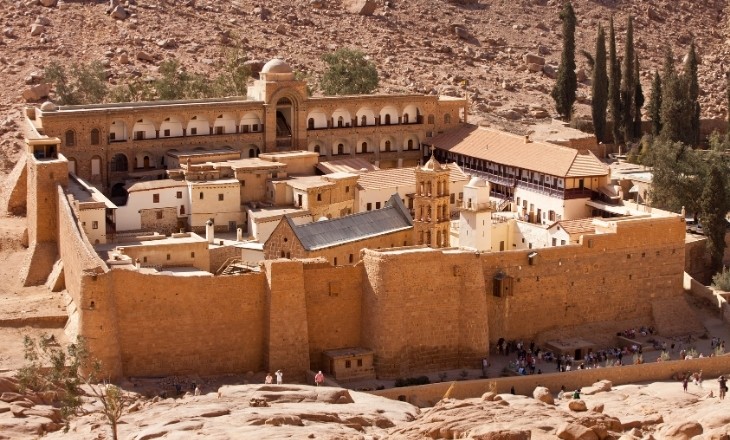
8. Kick back and relax on the beach |
If no other reasons fuel your wanderlust, then this point should do the trick. The beaches! Egypt’s Red Sea coastline is famed for its brilliant turquoise waters, and this is where the desert meets the sea. In the Red Sea Riviera, you have a wide range to select from.
The favourite activities other than lounging on the beach is Diving and Snorkelling in astonishing coral reefs. Swimming with the tropical fish and interesting shipwreck sites make the Red Sea a paradise for scuba divers and snorkellers.

Some of the best seaside spots and family activities are in eastern Egypt. -Hurghada, the oldest beach resort in Egypt, hosts over a dozen attractions to keep you engaged. Take a boat to Giftun Island or a submarine-style trip to see the world’s largest aqua-culture museum or experience desert hinterland on the five-hour quad bike safari in Hurghada, including a visit to Bedouin village. In the evenings, unwind at the Marina cafés or restaurants with lovely sea view. The fully-contained resorts of resort strip extending towards the south are a good option if you want to spend a few days lazing on the beach or by the pool.
-1604326309.jpeg)
Sharm El Sheikh, the resort town, is one of the world's top diving destinations surrounded by rich, diverse marine life habitat because of Ras Mohammed National Park. The park is the southernmost tip of the Sinai Peninsula, where the Gulf of Suez's waters and the Red Sea meet, encompassing two islands, Tiran and Sanafir. While you are diving in the incredible Yolanda, Shark reefs or Dunraven, look for the colourful fish, barracuda, reef sharks, turtles and manta rays around you.
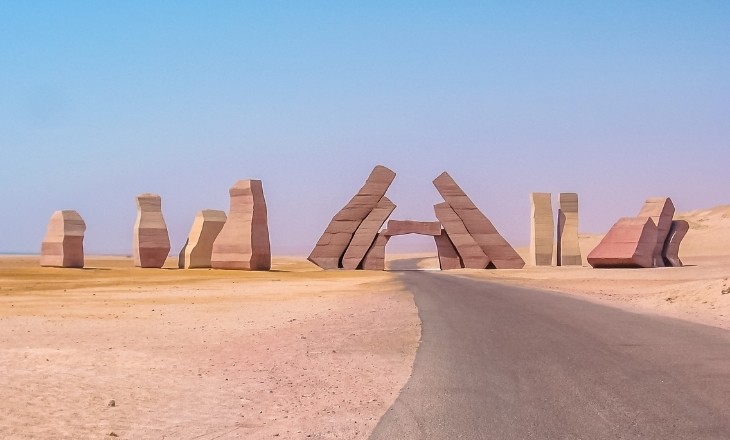
Apart from diving, Sharm is also a base for overnight tours to Mt. Sinai & Saint Catherine's Monastery.
Brimming with premium hotels and excellent facilities, it makes for one of Egypt's best places to spend time with family and friends and mix mountain exploration with diving or snorkelling adventure just offshore.
There’s also much to shop from Sharm Old Market (also known as Sharm al-Maya), selling colourful handicraft of the local Bedouin culture, Arabic lamps, traditional shisha pipes, and finely carved woodwork.
Dahab is a chilled-out former fishing village south of Sinai, renowned for its diving, Blue Hole - a submarine sinkhole in particular. Abound by colourful beach cafés, Dahab is also a dispatch point for camel and jeep safaris into the rugged interior. It has attracted young independent backpackers and budget travellers for its boho vibe. The accommodation around the Bedouin village of Assalah is mostly hotels, basic hotels and beach huts. Although to the south in Medina, luxury hotels are catering to premium clientele.
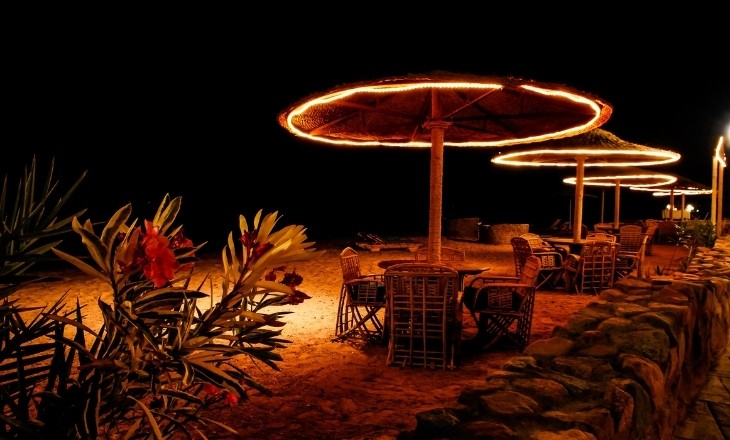
Besides, you can opt to unwind in El Gouna luxury hotels set among gorgeous mountains and crystal clear waters. Go fishing and sightseeing, or just kick back and relax on the expanse of Marsa Alam’s endless white beaches. Marsa Alam and Safaga are famous therapeutic sites. Safaga, especially, is possibly one of the best locations in the world for curing psoriasis.
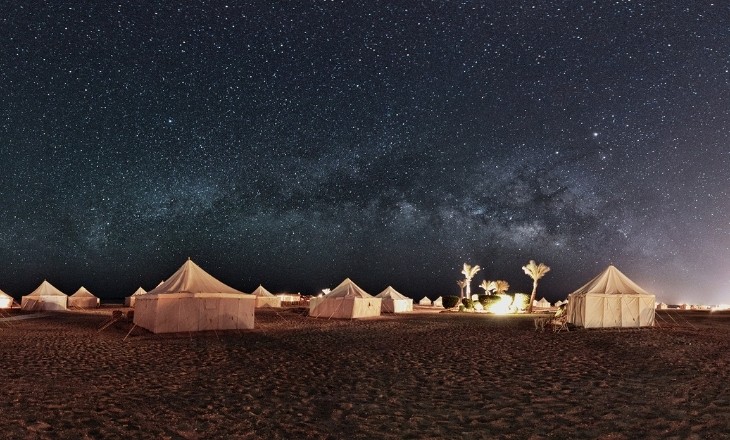
Egypt is a traditional country, it wise to educate yourself with their basic do’s and don’ts before you arrive. This effort will take you far with the locals in gaining their respect.
.png)

.jpg)



.jpg )



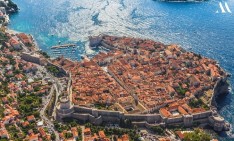

.jpg )
